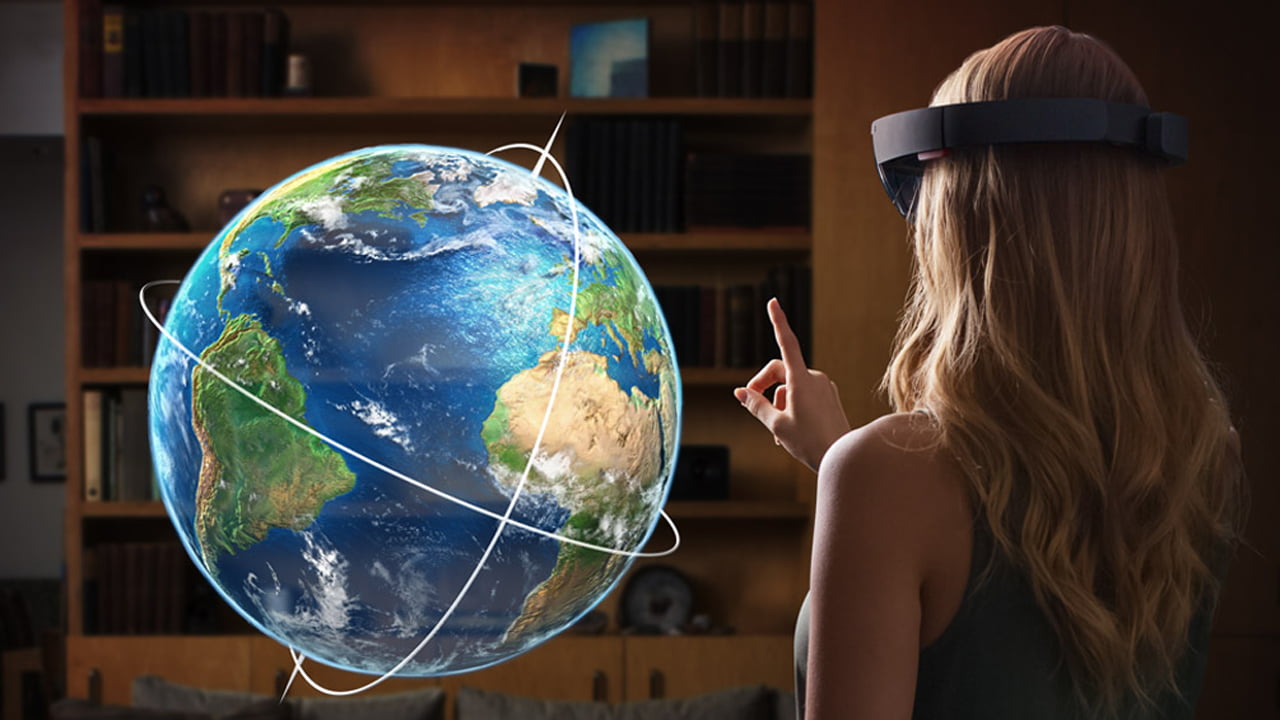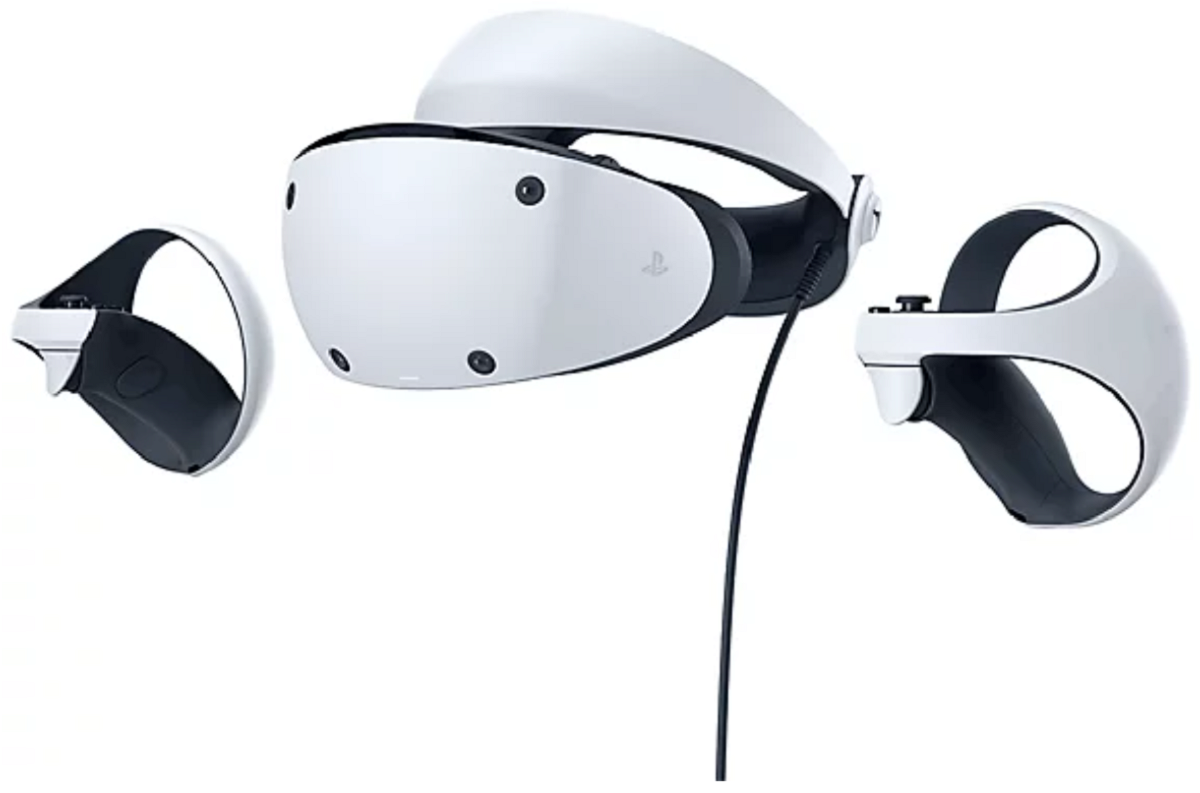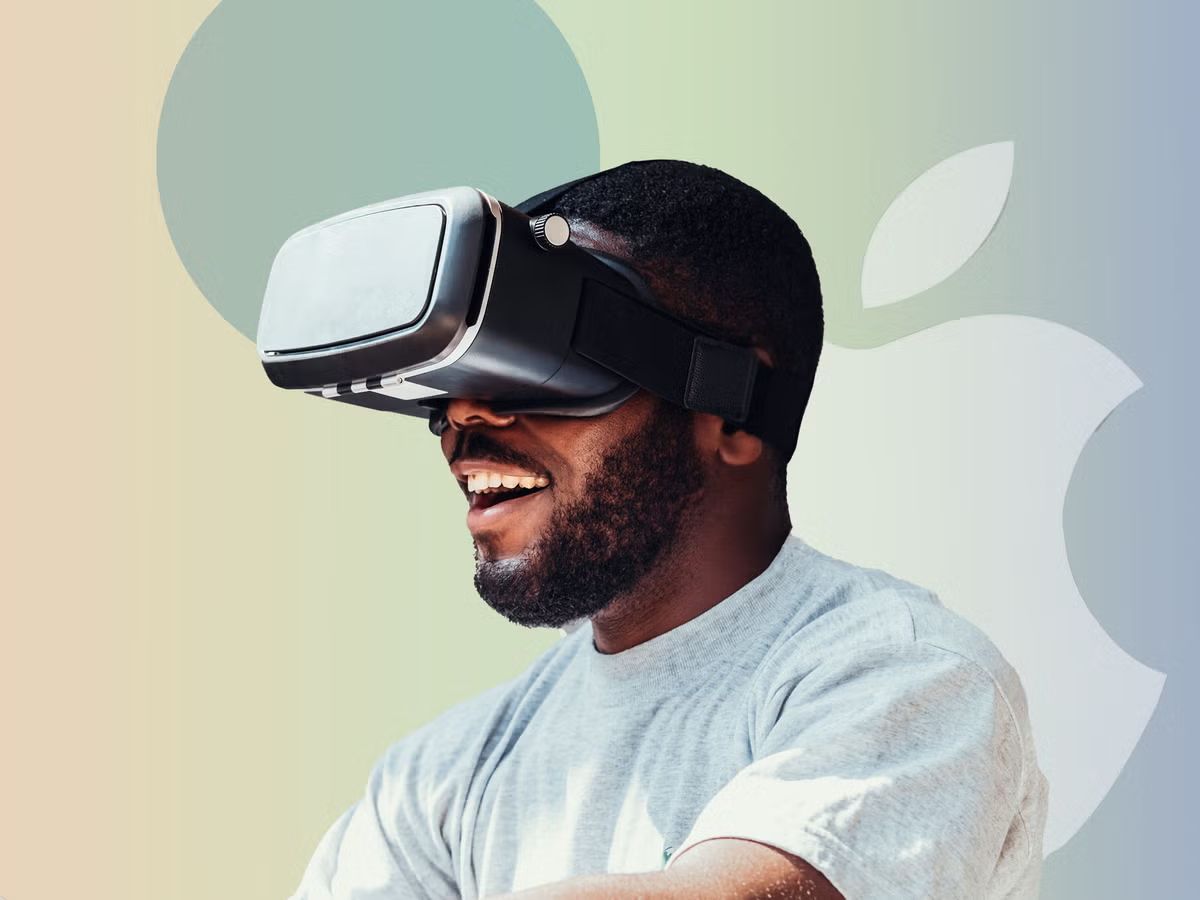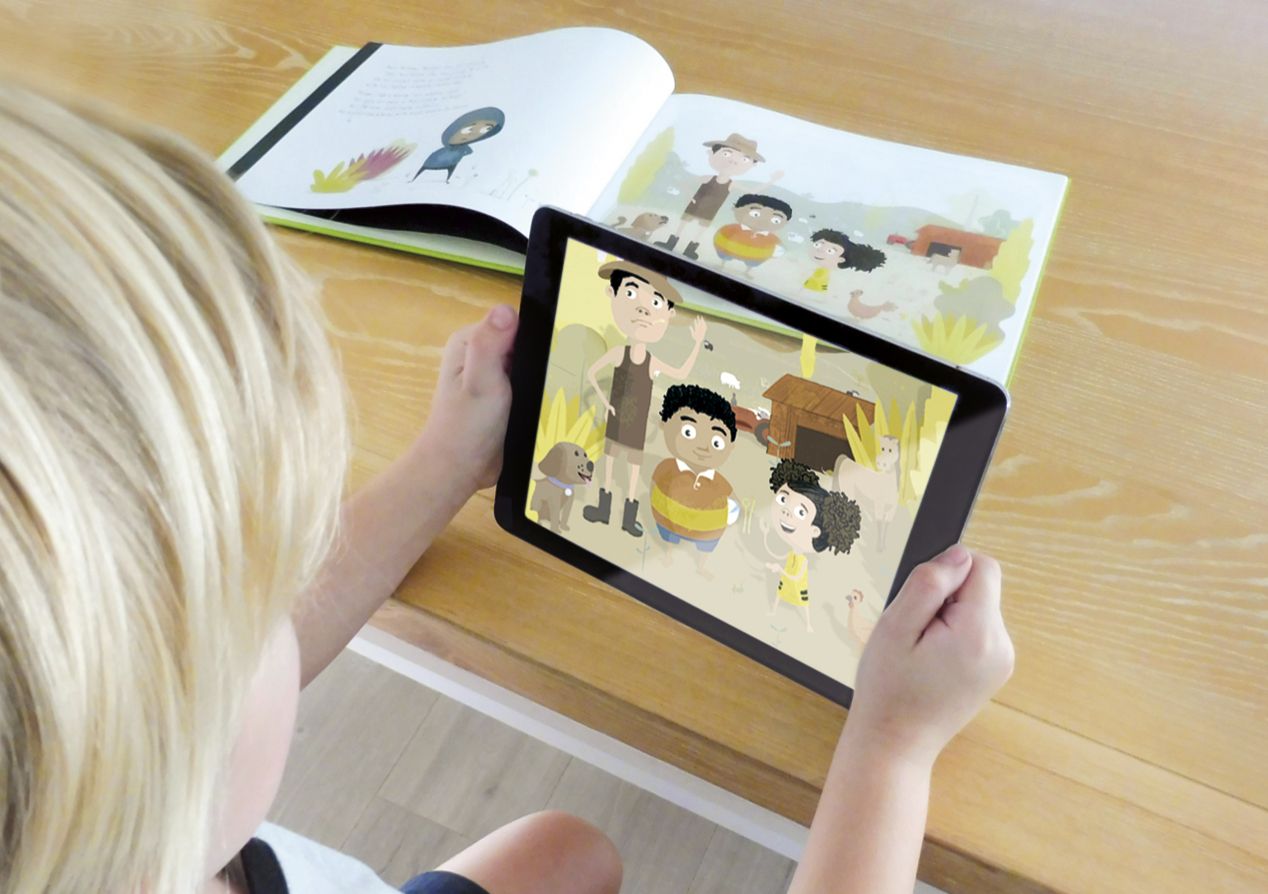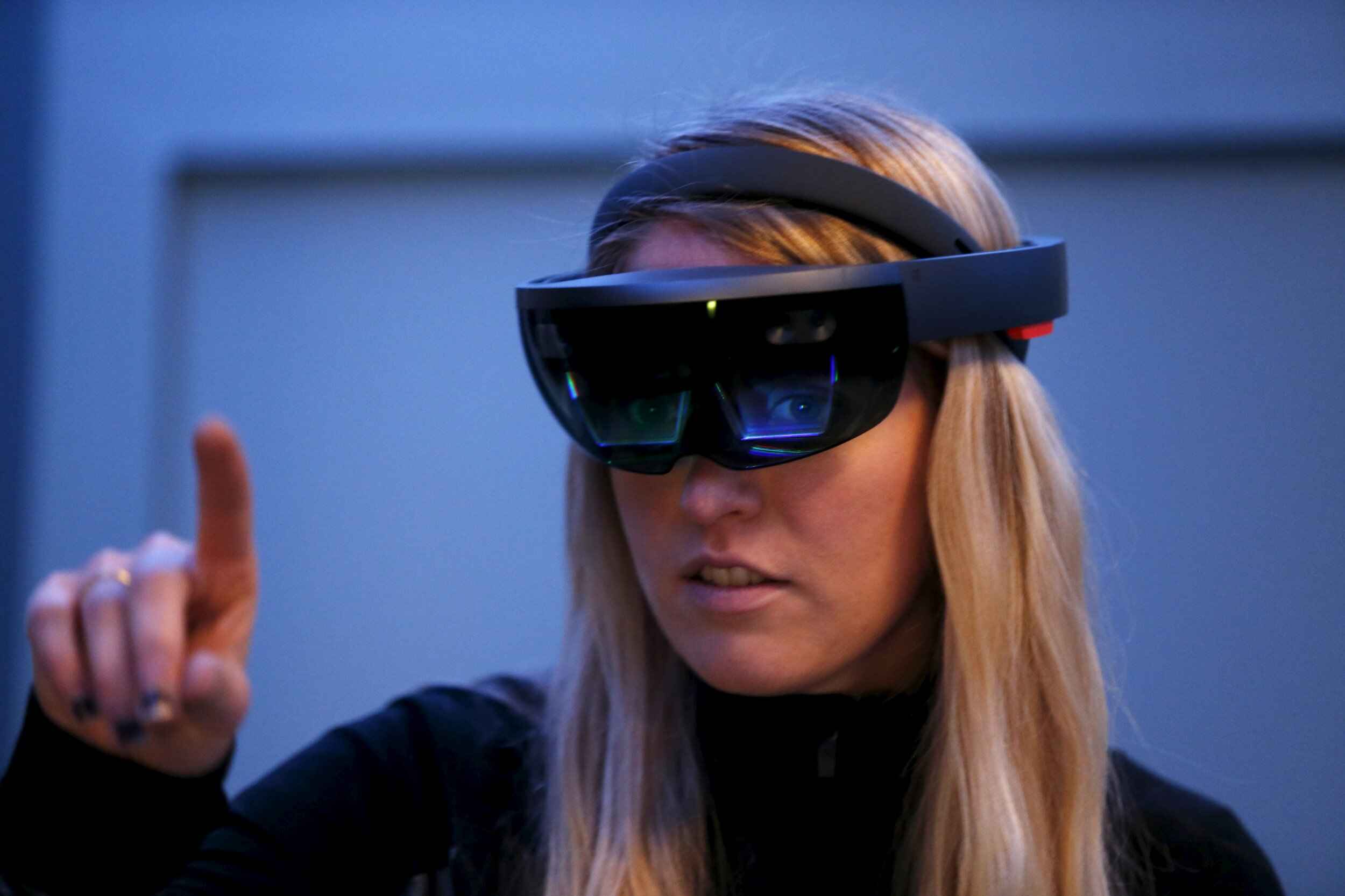Introduction
Virtual reality (VR) has revolutionized the way we experience and interact with digital content. Through the use of advanced technology and immersive simulations, VR provides users with a realistic and immersive experience that blurs the line between the virtual world and reality.
In recent years, the popularity of VR has been skyrocketing, as more and more industries are embracing this innovative technology. From gaming and entertainment to education and healthcare, VR has the potential to transform various sectors and enhance the way we learn, work, and entertain ourselves.
Learning how to navigate the world of virtual reality can be an exciting and rewarding journey. Whether you’re a gaming enthusiast looking to explore new realms or a professional seeking to leverage VR for training and simulation purposes, this guide will provide you with valuable insights and tips to get started.
In this article, we will explore the basics of virtual reality, the benefits of learning VR, and the steps you can take to embark on your VR learning journey. We will also discuss how to choose the right VR device, set it up, and explore various applications and games. Additionally, we will touch upon the importance of joining virtual reality communities and taking courses or tutorials to enhance your skills.
By the end of this article, you will have a solid understanding of virtual reality and the tools necessary to begin your own virtual reality adventure.
What is Virtual Reality?
Virtual reality (VR) refers to an immersive technology that simulates realistic three-dimensional environments, allowing users to interact and engage with digital content in a seemingly real way. Through the use of VR devices such as headsets and controllers, users can enter a computer-generated world that stimulates their senses, creating a sense of presence and immersion.
At its core, virtual reality aims to create a simulation of reality that is so convincing that users are fully engrossed in the virtual environment, often forgetting their physical surroundings. This is achieved through a combination of cutting-edge hardware and software technologies, including high-resolution displays, motion tracking sensors, and spatial audio.
One of the key elements of virtual reality is the concept of presence. Presence refers to the feeling of actually being in the virtual environment, as if it were a physical space. This sensation is created through the careful design of VR experiences that provide visual, auditory, and even haptic feedback to the user, making them feel as though they are interacting with objects and people in the virtual world.
Virtual reality can be experienced in a variety of ways, ranging from fully immersive experiences using head-mounted displays (HMDs) to less immersive experiences using mobile devices or desktop computers. Regardless of the level of immersion, the goal of virtual reality is to transport the user to a different reality and provide them with an interactive and engaging experience.
VR technology is commonly used in a wide range of industries and applications. In gaming and entertainment, VR allows players to step into virtual worlds and experience games in a whole new way. It is also utilized in education and training, offering immersive simulations and scenarios for learning and skill development.
Virtual reality has also found applications in healthcare, architecture, engineering, and many other fields. The potential uses for VR are constantly expanding as technology evolves and new possibilities arise.
In the next section, we will explore the various benefits of learning virtual reality and how it can positively impact different areas of our lives.
Benefits of Learning Virtual Reality
Learning virtual reality opens up a world of possibilities and brings numerous benefits to individuals and industries alike. Whether you are a gamer, a professional, or an enthusiast, here are some of the advantages of delving into the realm of virtual reality:
- Immersive Experiences: Virtual reality allows users to escape into immersive environments and experiences that are not possible in the physical world. Whether it’s exploring fantastical landscapes, diving into the depths of the ocean, or visiting historical landmarks, VR provides a level of immersion that traditional media cannot achieve.
- Enhanced Training and Learning: VR offers a unique platform for training and education. Industries such as aviation, medicine, and military use VR simulations to train individuals in a safe and controlled environment. It allows users to practice complex procedures, hone their skills, and gain hands-on experience without real-world consequences.
- Improved Design and Visualization: Architects and designers can leverage virtual reality to create immersive walkthroughs of buildings and environments before they are constructed, enabling better visualization and more accurate feedback. It helps in identifying design flaws, making adjustments, and improving the overall design process.
- Expanded Gaming and Entertainment: Virtual reality takes gaming and entertainment to a whole new level. Whether you’re battling aliens in a sci-fi shooter or experiencing a thrilling roller coaster ride, the level of immersion and interaction provided by VR enhances the entertainment value and provides a more engaging and captivating experience.
- Empathy and Emotional Connection: VR has the power to evoke strong emotions and create a sense of empathy. By immersing users in virtual scenarios, it allows them to experience different perspectives and cultures, fostering empathy and understanding. It can also be used as a therapeutic tool for treating phobias, anxiety, and post-traumatic stress disorder.
- Collaboration and Communication: Virtual reality enables people to connect and collaborate in virtual spaces, regardless of their physical location. It allows remote teams to work together, hold virtual meetings, and share ideas in a more interactive and immersive manner, enhancing productivity and communication.
- Exploration and Adventure: VR transports users to places and experiences that may not be accessible in reality. From exploring ancient civilizations to climbing Mount Everest, virtual reality offers a sense of adventure and exploration without the limitations of time, physical ability, or travel restrictions.
These are just a few of the many benefits associated with learning virtual reality. As the technology continues to evolve and become more accessible, the possibilities for its application and the benefits it brings will only continue to grow.
Getting Started with Virtual Reality
Embarking on your virtual reality journey is an exciting endeavor that requires some initial preparation and understanding. Here are the essential steps to get started:
- Research and Familiarize Yourself: Begin by researching and familiarizing yourself with the basics of virtual reality. Understand the different types of VR devices available, such as high-end headsets, mobile VR platforms, or standalone systems. Look into the technical requirements, compatibility, and available content for each option.
- Choose the Right VR Device: Consider your specific needs, preferences, and budget when selecting a VR device. High-end headsets such as Oculus Rift, HTC Vive, or PlayStation VR offer the most immersive experiences but require a powerful computer or gaming console. Mobile VR platforms like Samsung Gear VR or Google Cardboard provide a more accessible and portable option. Evaluate the pros and cons of each and choose the device that suits you best.
- Check the System Requirements: If you opt for a PC-based VR device, ensure that your computer meets the necessary system requirements. VR often demands a powerful GPU, a fast processor, and ample RAM to run smoothly. Consult the manufacturer’s specifications to confirm compatibility.
- Set Up Your VR Device: Follow the instructions provided by the manufacturer to set up your VR device properly. This typically involves connecting cables, positioning sensors, and installing the necessary software or apps. Ensure that your space offers enough room for movement and that there are no obstacles that could disrupt your VR experience.
- Learn the Controls: Familiarize yourself with the controls of your VR device, including any motion controllers or input devices. Practice using the buttons, triggers, and joysticks to interact with the virtual environment. Take some time to understand how to navigate menus, adjust settings, and troubleshoot technical issues.
- Start with Beginner-Friendly Experiences: Begin your virtual reality journey with beginner-friendly experiences to get accustomed to the immersive environment. Explore introductory apps, games, and demos that are designed for newcomers. This will help you understand the capabilities of VR and gradually ease into more complex and intense experiences.
- Join VR Communities and Forums: Engage with the vibrant VR community by joining forums, subreddits, and social media groups dedicated to virtual reality. Share your experiences, ask questions, and learn from others who are passionate about VR. It’s a great way to stay updated on the latest developments, discover new content, and connect with like-minded individuals.
- Consider Taking VR Courses or Tutorials: To enhance your knowledge and skills in virtual reality, consider taking online courses or tutorials. Many platforms offer comprehensive VR courses that cover various topics like VR development, design, and storytelling. These resources can provide valuable insights and guidance for further learning.
- Experiment and Have Fun: The beauty of virtual reality lies in the endless possibilities it offers. Experiment with different games, experiences, and applications to find what appeals to you the most. Explore diverse genres, engage with interactive storytelling, and embrace the immersive world of VR. Remember to take breaks and be mindful of motion sickness if it occurs.
By following these steps, you will be well on your way to exploring the vast and exciting world of virtual reality. As you gain more experience and confidence, you can dive deeper into advanced content creation, programming, or even VR game development. The key is to stay curious, open-minded, and enjoy the incredible immersive experiences that virtual reality has to offer.
Choosing the Right VR Device
When it comes to virtual reality, choosing the right device is crucial for an optimal experience. With a wide range of VR devices available, it’s important to consider your needs, preferences, and budget before making a decision. Here are some factors to consider when choosing a VR device:
- Level of Immersion: Consider the level of immersion you desire. High-end VR devices like Oculus Rift, HTC Vive, and Valve Index offer a more immersive experience with high-resolution displays, advanced tracking systems, and motion controllers. On the other hand, mobile VR platforms such as Samsung Gear VR or Google Cardboard provide a less immersive but more portable option.
- Compatibility: Check the compatibility of the VR device with your existing hardware. PC-based VR systems require a powerful computer with specific hardware requirements, including a powerful graphics card, sufficient RAM, and an adequate processor. Mobile VR devices, on the other hand, require a compatible smartphone.
- Content Availability: Consider the availability of VR content for the device you are considering. High-end VR platforms usually have a more extensive library of games, applications, and experiences, while mobile VR platforms have a more limited selection. Research and ensure that the device you choose offers the content you are interested in.
- Budget: Set a budget for your VR device and stick to it. High-end VR systems tend to be more expensive, with additional costs for powerful hardware requirements. Mobile VR platforms are generally more affordable, with the only cost being the headset itself. Consider your financial limitations and choose a device that offers the best balance between price and performance.
- Comfort and Ergonomics: Consider the comfort and ergonomics of the VR device. Look for devices with adjustable head straps and cushioning to ensure a comfortable fit. Consider the weight of the device, as heavier headsets may cause discomfort during extended use. Additionally, pay attention to the ventilation and heat dissipation to prevent overheating.
- User Reviews and Feedback: Read user reviews and seek feedback from others who have used the VR device you are considering. User reviews can provide valuable insights into the pros and cons of different devices, helping you make an informed decision. Consider factors such as build quality, tracking accuracy, ease of use, and overall user satisfaction.
- Future Compatibility and Upgrades: Consider the future compatibility and potential for upgrades of the VR device. As technology continues to evolve, new features and advancements may become available. Check whether the device supports future upgrades or if it is likely to become outdated quickly.
By considering these factors, you can make an educated decision when choosing a VR device that aligns with your needs and preferences. Whether you opt for a high-end system that provides a fully immersive experience or a mobile VR platform that offers portability and affordability, the right VR device will allow you to delve into the incredible world of virtual reality and unlock immersive experiences like never before.
Setting Up Your VR Device
Setting up your VR device properly is crucial to ensure a smooth and enjoyable virtual reality experience. Here are the essential steps to follow when setting up your VR device:
- Read the Manual: Before beginning the setup process, thoroughly read the user manual or setup guide provided by the manufacturer. Familiarize yourself with the specific instructions and requirements for your VR device.
- Clear Your Play Area: Ensure that you have a designated play area with enough space to move around freely. Clear the area of any obstacles, furniture, or fragile objects that could be damaged during gameplay. Consider using a rug or mat to mark the boundaries of your play area.
- Connect Cables and Power: Connect the necessary cables to your VR device as instructed in the manual. This typically involves connecting the headset to your computer or game console, plugging in sensors, and connecting any additional accessories. Make sure all connections are secure.
- Update Firmware and Software: Check for any firmware or software updates for your VR device. Manufacturers often release updates to improve performance, fix bugs, and introduce new features. Follow the instructions provided by the manufacturer to update the firmware or software before proceeding.
- Install VR Software: Install the required software or applications for your VR device on your computer or smartphone. This software is necessary to run VR experiences and games. Follow the instructions provided to ensure a proper installation.
- Calibrate and Configure: Depending on the VR device, you may need to calibrate and configure the sensors or tracking systems. Follow the instructions provided by the manufacturer to properly set up the tracking or positional systems. This will ensure accurate and smooth tracking of your movements in the virtual environment.
- Adjust the Headset: Put on the VR headset and adjust it for a comfortable and secure fit. Ensure that the lenses are positioned at the correct distance from your eyes, and the head strap is adjusted to provide a snug fit. Adjust any other settings or options, such as interpupillary distance, to optimize the visual experience.
- Perform Hardware Checks: Run any hardware checks or diagnostics provided by the manufacturer to ensure that all components and peripherals are functioning properly. This will help identify any issues that may affect the performance of the VR device.
- Test and Troubleshoot: Once everything is set up, perform a test to verify that the VR device is working correctly. Launch a simple VR experience or game to ensure that both the visual and audio components are functioning as expected. If any issues arise, consult the troubleshooting section in the user manual or contact customer support for assistance.
Setting up your VR device correctly is vital to enjoy a seamless and immersive virtual reality experience. By following these steps and consulting the provided manuals and instructions, you can ensure that every component is properly connected, configured, and optimized for an optimal VR experience.
Learning the Basics of Virtual Reality
To fully immerse yourself in the world of virtual reality, it is essential to learn the basics of this exciting technology. Understanding the fundamental concepts and terminology will empower you to make the most of your VR experience. Here are some key aspects to focus on when learning the basics of virtual reality:
- Head-Mounted Display (HMD): The head-mounted display, or HMD, is the primary device used to visualize the virtual environment. It is typically worn on the head and consists of a high-resolution display, lenses, and sometimes built-in sensors. Familiarize yourself with the features and functionalities of different HMDs available on the market.
- Motion Tracking: Motion tracking is a crucial element in virtual reality that allows the system to detect and track the movement of your head, hands, and body. Understanding how motion tracking works and the different tracking methods, such as inside-out and outside-in tracking, will enhance your interaction with the virtual environment.
- Controllers and Input Devices: Controllers and input devices play a significant role in virtual reality experiences. They enable you to interact with the virtual world, manipulate objects, and navigate through menus and interfaces. Learn about the different types of controllers, their features, and how to use them effectively to enhance your VR experience.
- Field of View (FOV): The field of view refers to the extent of the virtual environment that is visible to the user. A wider field of view enhances immersion by providing a more encompassing view of the virtual world. Familiarize yourself with the concept of field of view and how it can impact your experience.
- Presence and Immersion: Presence and immersion are at the core of virtual reality. Presence refers to the feeling of actually being in the virtual environment, while immersion refers to the level of engagement and absorption in the experience. Explore techniques and design principles that enhance presence and immersion, such as realistic graphics, spatial audio, and haptic feedback.
- Comfort and Safety: Pay attention to comfort and safety while using virtual reality. Extended use of VR devices can cause discomfort and fatigue. Understand the importance of taking breaks, maintaining proper hygiene, and using accessories such as face cushions and lens protectors to ensure a comfortable and hygienic experience.
- Virtual Reality Applications: Virtual reality has applications beyond gaming and entertainment. Learn about the various industries and fields that utilize VR, such as education, healthcare, architecture, and training. Explore the potential benefits and opportunities that VR brings to these industries.
- Best Practices and Guidelines: Familiarize yourself with best practices and guidelines for using virtual reality. This includes understanding the importance of clear play areas, setting up appropriate hardware and software, and maintaining proper posture and ergonomics to ensure a safe and enjoyable experience.
- Stay Updated: Virtual reality technology is constantly evolving. Stay updated with the latest advancements, new releases, and emerging trends in the field of virtual reality. Follow industry leaders, read tech blogs, and join virtual reality communities to stay informed and connected.
By learning the basics of virtual reality and staying informed about the latest trends and developments, you can enhance your understanding and appreciation of this transformative technology. Embrace the immersive experiences and opportunities that virtual reality offers and continue to explore and expand your knowledge in this exciting and rapidly evolving field.
Exploring VR Applications and Games
One of the most exciting aspects of virtual reality is the wide range of applications and games available to explore. From immersive storytelling experiences to thrilling games, there is something for everyone in the virtual reality landscape. Here’s what you need to know about exploring VR applications and games:
- VR Gaming: Virtual reality gaming provides an unparalleled level of immersion and interactivity. Step into realistic virtual worlds, battle fierce enemies, and solve puzzles in a way that conventional gaming cannot replicate. Explore a variety of genres, from action-packed shooters to breathtaking adventures and puzzle-solving experiences.
- VR Experiences: VR experiences are non-gaming interactive narratives or simulations that allow you to explore captivating digital environments. These experiences can include educational journeys, virtual tours of historical sites, or artistic and cinematic VR experiences. Immerse yourself in different narratives, explore virtual museums, or embark on exciting virtual adventures.
- Room-Scale Experiences: Room-scale experiences utilize the full range of motion tracking capabilities of virtual reality. These experiences allow you to move around and interact with objects in a physical space. Dive into room-scale games that turn your entire living room into a virtual playground, where you can physically dodge obstacles, shoot enemies, and solve puzzles.
- Social VR: Social VR platforms enable you to connect and interact with other VR users in a virtual world. Engage in virtual conversations, attend virtual events, and collaborate with others using avatars. Experience virtual social gatherings, multiplayer games, and virtual meeting spaces to connect with friends, colleagues, and like-minded individuals.
- Simulations and Training: Virtual reality simulations are widely used for training purposes in various industries. Simulate real-life scenarios, such as flight training, medical procedures, or architectural walkthroughs, to enhance learning and skill development. Explore training applications that provide hands-on practice in a safe and controlled virtual environment.
- User-Generated Content: With the advent of VR creation tools, user-generated content in virtual reality is booming. Discover immersive experiences created by the VR community, download user-generated games and applications, and even try your hand at creating your own VR content using tools like Unity, Unreal Engine, or VR-specific platforms.
- Exploring VR Marketplaces: VR marketplaces, like Oculus Store, SteamVR, and PlayStation VR Store, offer a plethora of VR applications and games. Browse through the extensive libraries of these platforms to discover new experiences, read reviews, and find content that matches your interests and preferences.
- Stay Updated and Try New Releases: The world of virtual reality is constantly evolving, with new applications and games being released regularly. Stay updated with the latest releases, upcoming titles, and VR news to ensure that you don’t miss out on exciting new experiences. Follow VR developers and communities to stay in the loop.
Exploring VR applications and games allows you to unlock the full potential of virtual reality and immerse yourself in captivating and interactive experiences. Whether you prefer gaming, simulations, or creative endeavors, there is a vast array of content waiting to be discovered in the ever-expanding virtual reality landscape.
Joining Virtual Reality Communities and Forums
Joining virtual reality communities and forums is a fantastic way to connect with fellow enthusiasts, share experiences, and stay updated on the latest trends and developments in the world of VR. By becoming a part of these communities, you can engage in discussions, seek advice, and expand your knowledge about virtual reality. Here’s why you should consider joining virtual reality communities and forums:
- Knowledge Sharing: Virtual reality communities and forums bring together individuals with a passion for VR. By joining these communities, you have the opportunity to share your experiences and knowledge with like-minded individuals. Engage in discussions, answer questions, and exchange tips and tricks to enhance your understanding of VR.
- Stay Updated: Virtual reality technology and content are constantly evolving. By being a part of VR communities and forums, you can stay up to date with the latest advancements, new releases, and emerging trends in the industry. Community members often share news, announcements, and insider information that can help you stay ahead and informed.
- Discover New Content: Virtual reality communities are a treasure trove of content recommendations. Members often share their favorite VR games, applications, experiences, and VR movies, exposing you to a diverse range of content you might have otherwise missed. Expand your VR library and uncover hidden gems recommended by fellow enthusiasts.
- Connect with VR Developers: Virtual reality communities provide a platform to connect directly with VR developers and industry professionals. Many VR developers actively engage with the community, seeking feedback, answering questions, and providing insights into their projects. By participating in these discussions, you can establish connections with developers and gain insider perspectives.
- Find VR Events and Meetups: VR communities often organize virtual reality events, meetups, and conferences where enthusiasts can come together to share their love for VR. These events offer opportunities to network, attend talks and workshops, and experience new VR technologies. Keep an eye out for virtual reality events happening both online and in-person.
- Collaborate on VR Projects: Virtual reality communities are an excellent platform for collaborating on VR projects. Whether you’re a developer looking for a team, an artist seeking collaborators for a VR experience, or an enthusiast interested in participating in a community project, VR communities can connect you with like-minded individuals to bring your ideas to life.
- Get Technical Support: Facing a technical issue with your VR device or software? Virtual reality communities are a valuable resource for troubleshooting and technical support. Many experienced members are willing to help troubleshoot common problems and provide solutions, saving you time and frustration.
- Share Feedback and Influence: VR developers value feedback from the community. By sharing your thoughts, suggestions, and opinions, you can contribute to the improvement of VR experiences and influence the development of new technologies. Engage in constructive discussions, offer feedback, and be a part of shaping the future of VR.
Joining virtual reality communities and forums provides a platform to connect with fellow VR enthusiasts, learn from one another, and stay abreast of the latest happenings in the VR world. Engage actively, share your experiences, and embrace the sense of camaraderie that comes with being a part of a vibrant virtual reality community.
Taking Virtual Reality Courses or Tutorials
If you’re looking to deepen your understanding of virtual reality and enhance your skills, taking virtual reality courses or tutorials can be immensely beneficial. These learning resources provide structured guidance and expert instruction to help you master various aspects of virtual reality. Here’s why you should consider taking virtual reality courses or tutorials:
- Comprehensive Learning: Virtual reality courses offer comprehensive learning experiences that cover a range of topics, from the basics of VR to advanced techniques and concepts. These courses are designed by experts in the field who have extensive knowledge and hands-on experience in virtual reality development, design, or related areas.
- Structured Curriculum: Virtual reality courses provide a well-structured curriculum that guides you through each step of the learning process. The curriculum is designed to build your knowledge and skills progressively, ensuring a solid foundation and allowing you to tackle more complex topics as you advance.
- Expert Instruction: Taking a virtual reality course gives you access to expert instruction from professionals who have a deep understanding of the subject matter. These instructors can provide valuable insights, practical tips, and industry best practices that you may not find elsewhere. Learning directly from experts can accelerate your learning process and help you avoid common pitfalls.
- Hands-on Projects: Many virtual reality courses include hands-on projects that allow you to put your knowledge into practice. These projects often involve building VR applications, designing immersive experiences, or creating VR assets. Working on real-world projects helps reinforce your learning and provides valuable portfolio pieces to showcase your skills.
- Collaboration Opportunities: Virtual reality courses often provide opportunities for collaboration with fellow learners. Engaging with other students allows you to learn from their experiences, exchange ideas, and even collaborate on projects. Collaborative learning fosters a sense of community and provides a platform for networking and future collaborations.
- Stay Updated with Industry Trends: Virtual reality courses are frequently updated to reflect the latest advancements and trends in the field. By enrolling in such courses, you can stay current with emerging technologies, industry standards, and best practices. This ensures that you are equipped with the most relevant knowledge in an ever-evolving field.
- Flexible Learning Options: Virtual reality courses offer flexibility in terms of learning options. Many courses are available online, allowing you to learn at your own pace and from the comfort of your home. This flexibility enables you to fit learning into your schedule without compromising other commitments.
- Career Advancement: By acquiring skills and knowledge through virtual reality courses, you can enhance your career prospects. A solid understanding of virtual reality and the ability to develop VR applications or design immersive experiences can make you a valuable asset in industries like gaming, healthcare, architecture, and more.
Investing time and effort in virtual reality courses or tutorials can be highly rewarding, resulting in an expanded skill set and a deeper understanding of this exciting technology. Whether you’re a hobbyist, a developer, or an aspiring professional, virtual reality courses provide a structured and guided path to proficiency in virtual reality.
Practicing and Experimenting with Virtual Reality
Practicing and experimenting with virtual reality is key to honing your skills, gaining a deeper understanding of the technology, and unlocking new possibilities. By actively engaging with VR experiences, games, and development tools, you can enhance your proficiency and unleash your creativity. Here’s why practicing and experimenting with virtual reality is crucial:
- Familiarize Yourself with VR Environments: Spend time exploring different virtual reality environments to get a sense of the immersion and interactivity they offer. Experiment with diverse experiences, such as games, simulations, and artistic showcases, to understand the unique characteristics and possibilities of each environment.
- Refine Interaction Skills: Practicing VR allows you to refine your interaction skills. Experiment with various input methods, such as hand controllers or hand tracking, to understand how they affect your immersion and the level of control you have within the virtual world. Challenge yourself to improve your hand-eye coordination and become comfortable with manipulating virtual objects.
- Experiment with VR Creation Tools: Try your hand at creating virtual reality experiences or games using VR creation tools like Unity, Unreal Engine, or specific VR development platforms. Experimenting with these tools allows you to unleash your creativity, explore different design possibilities, and gain practical experience in VR content creation.
- Explore VR Development: Dive deeper into the technical aspects of virtual reality by trying your hand at VR development. Learn a programming language like C# or Python, and delve into VR development frameworks and SDKs. Create your own experiences, experiment with different mechanics, and start building your portfolio of VR projects.
- Collaborate with Others: Join hands with fellow VR enthusiasts, developers, or artists to collaborate on VR projects. By working together, you can learn from one another, pool your skills and resources, and build more ambitious and impactful VR experiences. Collaboration also provides valuable networking opportunities and fosters a sense of community.
- Stay Updated with VR Innovations: Keep up with the latest VR innovations, technologies, and trends by immersing yourself in the VR community, attending conferences, and following VR industry news. Experiment with new hardware, software, and accessories to stay ahead of the curve and harness the full potential of emerging VR technologies.
- Iterate and Iterate Again: The iterative process is crucial in VR development. Continuously iterate and refine your VR projects based on user feedback and your own observations. Experiment with different mechanics, visual styles, and user interface designs to enhance the overall experience. Take advantage of user testing and feedback to iterate and improve upon your work.
- Challenge Yourself: Push the boundaries of what you can achieve in VR by setting goals and challenging yourself. Aim to create a more immersive experience, experiment with new interaction methods, or explore uncharted territories in VR development. Stepping out of your comfort zone and tackling new challenges will help you grow as a VR practitioner.
Through practice and experimentation in the virtual reality space, you can unleash your creativity, master your skills, and push the boundaries of what is possible. Embrace the inherent flexibility and freedom that virtual reality offers, and embark on a journey of continuous learning and discovery in this rapidly evolving medium.
Troubleshooting Common VR Issues
Virtual reality can sometimes present challenges and issues that can affect your experience. However, with the right troubleshooting techniques, you can overcome these obstacles and ensure a smooth VR journey. Here are some common VR issues and their troubleshooting solutions:
- Hardware Connectivity: Ensure that all your VR hardware components are properly connected and securely plugged in. Double-check the cables, power connections, and any additional accessories. Loose connections can lead to tracking issues or loss of visuals and audio.
- Tracking Problems: If you’re experiencing tracking problems, check the placement of the VR sensors or cameras. Make sure they are facing the play area and have an unobstructed view. Reflective surfaces or bright lighting in the room can also interfere with tracking. Adjust the lighting conditions or cover any reflective surfaces if needed.
- Motion Sickness: Motion sickness is a common issue for some users in VR. To alleviate this, take regular breaks during VR sessions, gradually increase your exposure to VR experiences, and avoid rapid or sudden movements. Adjusting the field of view, reducing graphics settings, or using comfort settings in VR applications can also help mitigate motion sickness symptoms.
- Performance Issues: If you notice performance issues such as lag, stuttering, or low frame rates, check that your computer meets the recommended system specifications for VR. Close any unnecessary background applications or processes that may be consuming system resources. Lower graphical settings within VR applications can also improve performance.
- Audio Problems: If you’re experiencing issues with audio, ensure that the headphones or speakers are properly connected to the VR headset or computer. Check the volume settings in both the VR system and your computer. If the audio is still not working, try plugging in different headphones or speakers to troubleshoot hardware-related issues.
- Software Updates: Keep your VR software and applications up to date. Manufacturers frequently release updates that address bugs, add new features, and improve performance. Check for updates regularly and install them to ensure optimal compatibility and functionality.
- Driver Updates: Make sure that your graphics card drivers and any other relevant drivers are up to date. Outdated drivers can cause compatibility issues, graphical glitches, or even prevent the VR system from functioning correctly. Visit the manufacturer’s website to check for the latest driver updates and install them as needed.
- Comfort Adjustments: Adjust the fit and comfort of your VR headset to minimize discomfort during prolonged use. Experiment with the strap adjustments, foam padding, and the position of the lenses to find a comfortable and secure fit. Additionally, take frequent breaks and avoid excessive use of VR to prevent eye strain and fatigue.
- Application-specific Issues: If you encounter issues with a specific VR application or game, check the application’s support resources or community forums for troubleshooting tips. Developers often provide troubleshooting guides or have active communities that can help resolve application-specific problems.
- Resetting or Restarting: If all else fails, try restarting your VR system or performing a complete reset. This can resolve temporary software glitches or conflicts that may be affecting performance or functionality.
By troubleshooting common VR issues, you can overcome challenges and ensure a smooth and enjoyable virtual reality experience. Remember to check for regular updates, follow best practices, and remain patient as you navigate and troubleshoot any issues that may arise along your VR journey.
Conclusion
Virtual reality continues to shape the way we interact with digital content, offering immersive experiences and endless possibilities. By learning the basics of virtual reality, exploring various applications and games, joining virtual reality communities, taking courses, and practicing with VR, you can unlock a whole new world of creativity, entertainment, and learning.
Understanding the fundamentals of virtual reality, such as the technology behind it, the benefits it brings, and the different types of devices available, allows you to make informed decisions when choosing your VR setup. By selecting the right VR device, setting it up correctly, and familiarizing yourself with its controls, you can ensure a seamless and immersive VR experience.
Exploring VR applications and games opens the door to incredible entertainment, storytelling, and even professional development opportunities. Engaging in virtual reality communities and forums connects you with like-minded individuals, enabling knowledge sharing, collaboration, and staying updated with the latest VR trends and developments.
Taking virtual reality courses or tutorials provides structured learning and expert instruction, allowing you to enhance your skills and deepen your understanding of VR. By practicing and experimenting with VR, you can refine your abilities, explore new possibilities, and push the boundaries of what is achievable in this immersive medium.
Finally, troubleshooting common VR issues ensures that you can overcome obstacles and enjoy a smooth VR experience. By following troubleshooting techniques, you can address hardware, software, and comfort-related challenges, allowing you to fully immerse yourself in the virtual world.
As you embark on your virtual reality journey, remember to stay curious, explore new experiences, and embrace the ever-evolving nature of this technology. Whether you’re a gaming enthusiast, a creative artist, an entrepreneur, or a professional in various industries, virtual reality offers endless opportunities to learn, create, and experience the extraordinary.










